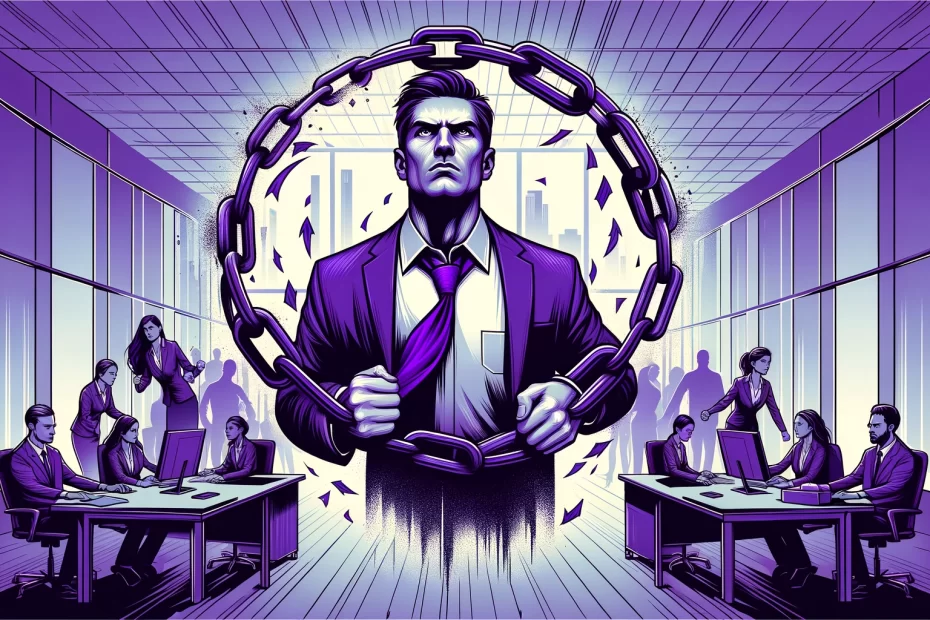A toxic workplace can have devastating effects on both employees and the organization as a whole. It erodes morale, hampers productivity, and creates a hostile environment that can lead to high turnover rates and low employee engagement. As a result, it is essential for Human Resources (HR) professionals to play a crucial role in breaking the cycle of toxicity within the workplace.
In this article, we will explore the signs and symptoms of a toxic workplace, the impact it has on employees and the organization, as well as the common causes and contributors to toxicity. We will then delve into the vital role HR can play in addressing these issues and creating a healthier work environment.
Understanding the Toxic Workplace
Signs and Symptoms of Toxic Workplaces
In order to address the issue of a toxic workplace, it is essential to first understand its signs and symptoms. These indicators can help HR professionals identify the presence of toxicity within an organization. Some common signs of a toxic workplace include high employee turnover, increased absenteeism and decreased productivity, negative workplace culture, and lack of trust and transparency.
Impact on employees and the organization
The presence of a toxic workplace can have severe consequences for both employees and the organization as a whole. The negative effects can permeate every aspect of the workplace, hindering growth and success. Some of the impacts of a toxic workplace include poor employee mental health, decreased employee engagement and motivation, negative reputation and difficulty attracting talent, and increased conflicts and reduced teamwork.
Common Causes and Contributors to a Toxic Workplace
Understanding the causes and contributors to a toxic workplace is crucial for HR professionals seeking to address the issue effectively. Some common causes and contributors include poor leadership, lack of clear expectations and boundaries, inadequate communication channels, and lack of recognition and appreciation.
Toxic: it’s a strong word, and one that no company wants used to describe its workplace culture
Forbes
The Role of HR in Addressing a Toxic Workplace
Creating a Culture of Trust and Respect
One of the primary responsibilities of HR is to foster a culture of trust and respect within the organization. This involves developing and implementing policies that promote fairness, equality, and inclusivity. HR should encourage open and honest communication, ensuring that employees feel comfortable expressing their concerns and opinions without fear of retaliation.
Implementing Effective Communication Channels
Effective communication is essential in addressing and resolving workplace toxicity. HR should establish and maintain clear and accessible communication channels, such as anonymous reporting systems or regular employee surveys. These channels allow employees to report any issues or concerns they may have, providing HR with valuable insights into the workplace environment.
Promoting Psychological Safety and Employee Well-Being
HR should prioritize the psychological safety and well-being of employees. Toxic workplaces often lead to increased stress, burnout, and reduced productivity. HR should actively promote employee well-being through initiatives such as employee assistance programs, mental health resources, and work-life balance policies.
Strategies for HR to Break the Cycle of Toxicity
Establishing Clear Expectations and Policies
One of the first steps HR can take to break the cycle of toxicity is to establish clear expectations and policies for employees. By clearly defining acceptable behavior and outlining the consequences for toxic actions, HR can set the tone for a respectful and inclusive workplace. Regular training sessions and reminders can help reinforce these expectations.
Providing Training and Development Opportunities
Another effective strategy for HR to break the cycle of toxicity is by investing in training and development opportunities for employees. Providing training on topics such as conflict resolution, effective communication, and emotional intelligence can equip employees with the necessary skills to navigate challenging situations and foster healthy relationships with their colleagues.
Addressing Conflicts and Resolving Issues Promptly
Timely intervention in workplace conflicts is crucial to prevent the escalation of toxic behavior. HR should establish mechanisms for employees to report issues and conflicts, such as anonymous reporting systems or designated HR representatives. When conflicts arise, HR should conduct thorough investigations, ensuring all parties involved are heard and treated fairly.
Wrapping It Up…
To no one’s surprise (hopefully), a toxic workplace can have detrimental effects on both employees and the organization as a whole. It is essential for HR professionals to recognize the signs and symptoms of toxicity, understand the underlying causes, and take proactive measures to break the cycle.
By creating a culture of trust and respect, implementing effective communication channels, promoting psychological safety and employee well-being, establishing clear expectations and policies, providing training and development opportunities, and addressing conflicts promptly, HR can foster a healthy work environment where employees thrive and contribute to the success of the organization as a whole. By taking these proactive measures, HR can make a significant impact in breaking the cycle of toxicity and creating a positive workplace culture.
FAQ
What is toxic workplace culture?
Toxic workplace culture refers to a work environment where employees experience stress, anxiety, and fear due to negative workplace dynamics such as bullying, harassment, discrimination, and favoritism.
How does HR contribute to toxic workplace culture?
HR departments, while responsible for ensuring fair treatment and adherence to policies, can contribute to toxic workplace culture by failing to address employee complaints, showing favoritism or discrimination, and lacking transparency in decision-making.
How can HR break the cycle of toxic workplace culture?
HR professionals can break the cycle of toxic workplace culture by actively listening to employee feedback, conducting regular training on diversity and inclusion, being transparent in decision-making processes, holding leadership accountable, and taking swift action when toxic behavior is identified.
What are the impacts of toxic workplace culture on HR professionals?
HR professionals who handle toxicity in the workplace are at risk of experiencing negative effects on their personal well-being, such as emotional exhaustion, burnout, and increased turnover rates.

